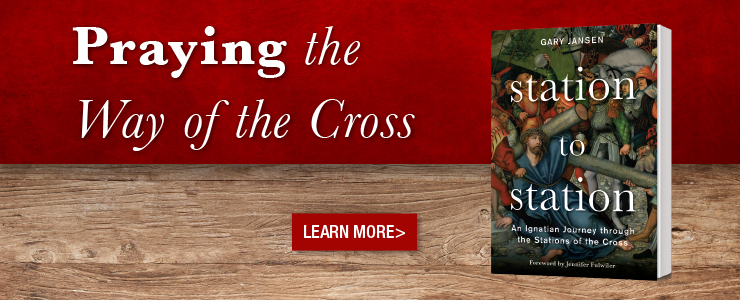Pray, Give, and Sacrifice
Catholic Lenten Practices

Giving up something for Lent, eating fish on Fridays and fasting from meat, almsgiving and penance throughout the forty days of Lent—these are some of the practices for which Catholics are known. But why do we as Catholics do this? Because through these commitments—known as “Lenten practices” or “Lenten disciplines”—the Catholic Church calls us each year to renew our discipleship in Christ. Specifically, each year during the liturgical season of Lent the Church asks us to pray, give alms, and fast.
Pray
We know the importance of prayer in our lives—as individuals, as families, and as a community. Prayer is especially important during Lent. The Lenten season is a time for reflection, evaluation, and repentance. As the booklet Praying Lent (Loyola Press, 2009) says, Lent asks us: “What needs changing?” Lent calls us to a personal conversion and renewal—to a recommitted life in Christ so that we might not just celebrate Easter forty days later but also feel the risen Christ alive in us and in the world. This means prayer. During Lent we set aside time for prayer that is reflective in nature and reveals places where we have failed to open ourselves to God.
Give
Every day we witness situations of injustice, violence, and hatred. Television and the Internet bring these into our living rooms, but we also observe and live them in our own cities and homes. The Church calls us during Lent to be especially conscious of the needs of others and to act accordingly. Giving materially to another is an act of Christian charity known as “almsgiving.” During Lent, the Church also calls us to first convert ourselves and then to transform the world for justice, so that we might serve the Kingdom which Jesus lived and preached.
Sacrifice
Fasting and abstinence are not sacrifices for the sake of pain or vain discomfort. Sacrifice for the sake of sacrifice is not a Christian virtue. We are asked by the Catholic Church to fast on Ash Wednesday and Good Friday, and not to eat meat on the Fridays of Lent. Feeling an empty stomach, or fighting the urge to have that juicy steak or candy bar does more than just remind us that for some people an empty stomach is their daily bread. Fasting and abstinence help us to ask ourselves the question: “What sustains me and gives me life?” What nourishes me on my journey of life? We will find the answer, not in the steak or the candy bar, but at the end of these forty days of Lent—in the Resurrection of Jesus. We fast and abstain because, when we do, we are reminded of who we are—followers of the risen Christ.
As Catholics, we joyfully engage in Lenten disciplines because we are disciples (and yes, both words have the same root). We pray, give (almsgiving), and sacrifice (fast) because we follow Christ, who loved us so much that gave his own life so that we might share in Eternal Life.
Stations of the Cross
The stations are a popular Lenten and Holy Week devotion first observed in the city of Jerusalem. The practice then spread to other areas during the Middle Ages. Praying the stations involves tracing Jesus' journey from the court of Pilate to Calvary and eventually to the tomb. In churches where images or plain crosses with numbers represent Jesus' steps, people walk from station to station to pray and reflect on the event portrayed in the station. There are fourteen stations, but in many devotional books a fifteenth has been added, the Resurrection.


